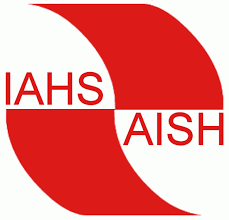|
W3 Modelling hydrological processes for prediction under change |
| Convener: Hafzullah Aksoy | Co-Conveners: Bellie Sivakumar , Yangbo Chen , Hossein Tabari , Martijn Booij |
|
Oral programme
/ Tue, 11 Jul, 13:40–17:10
/ Room C1
/ Wed, 12 Jul, 08:30–15:20 / Room B2
Poster programme
/ Attendance Tue, 11 Jul, 15:50–17:30
/ Room B2
|
Supporting commission(s) / organisations: ICSW, ICRS, ICSH, Panta Rhei
Hydrological cycle is made of complex nonlinear processes that often change widely with space and time. Within the hydrological cycle are precipitation, evaporation, transpiration, infiltration, percolation, surface water flow, subsurface flow, groundwater flow, etc. These processes, which are all under change, indicate that the hydrological cycle itself changes. Changes in hydrological processes can be either fast or slow, temporary or permanent, gradual or sudden, natural or man-made, etc. From a practical point of view, hydrological behaviour under change must be foreseen appropriately in order to design hydraulic structures. The design must be economical; neither over- nor under-designed. In hydrology, this is possible by prediction/ estimation/forecasting models. Better known the past behaviour of the processes, more accurate predictions will be obtained by the models.
A workshop on modelling hydrological processes under change is expected to offer important inputs and guidelines for the three targets of Panta Rhei by (i) understanding the change in hydrological processes, (ii) developing models for estimation and prediction, and (iii) practicing the developed models for societial use. It is aimed at publishing a peer-review opinion paper within the scope of Prediction under Change Working Group (PuC WG) of Panta Rhei afterwards by contributions from Workshop participants. The following topics are expected to be covered:
- The role of data in prediction under change
- Models’ help in providing better prediction under change
- Gaps and shortcomings in existing hydrological models designed for prediction
- Incorporation of change into hydrological models used for prediction- Fast/slow change
- Society affected by change in hydrological regime
- Society reaction against change
- Combination of in-situ and remote sensing information for improving prediction under change
- Key sources of uncertainty in prediction under change
- Prediction under uncertainty
- Influence of change in hydrological regimes on water-related disasters
